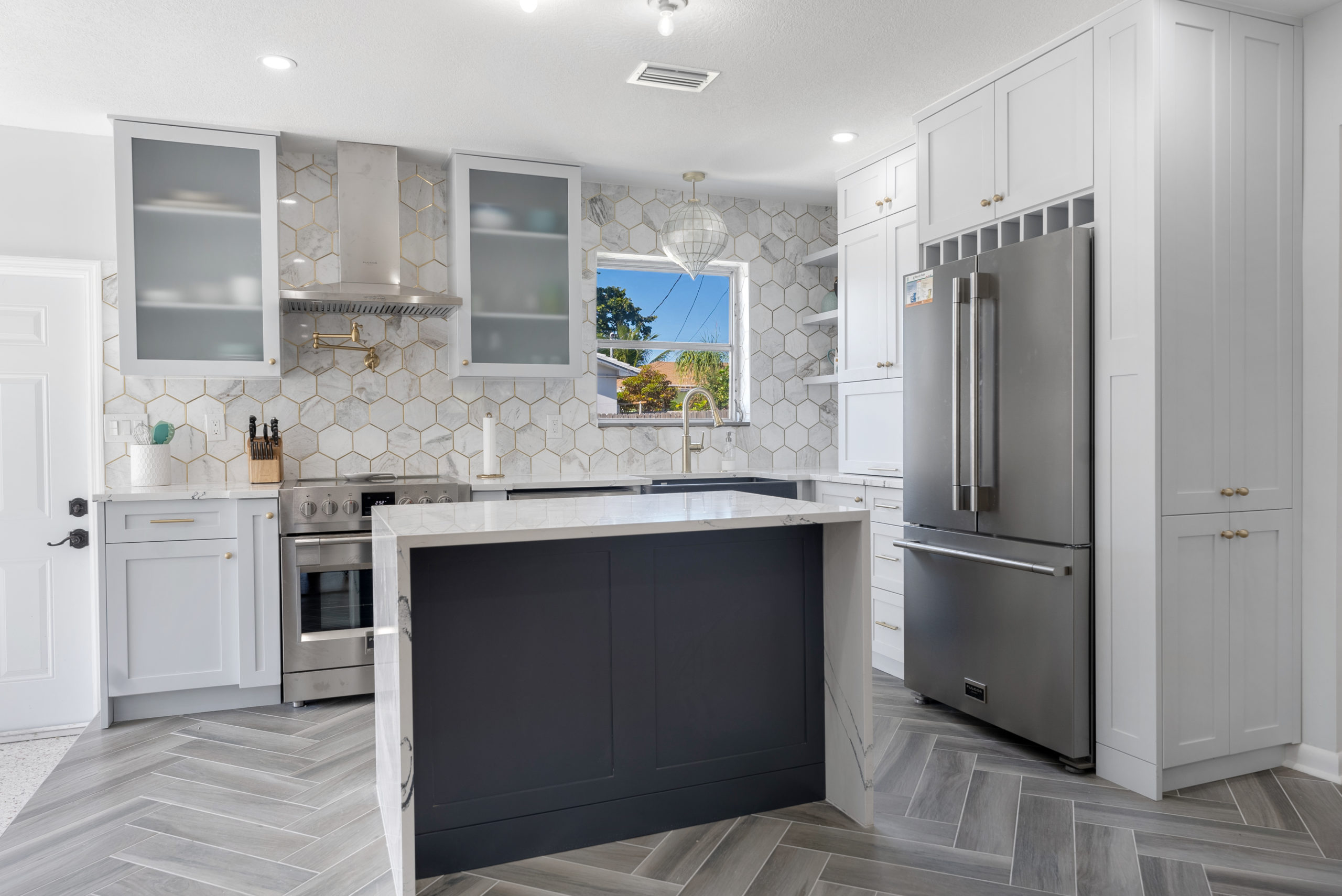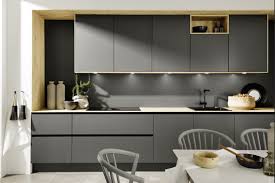The kitchen has always been the heart of the home, a place where meals are prepared, and memories are made. In recent years, advancements in technology have transformed traditional kitchens into smart kitchens, enhancing convenience, efficiency, and even the joy of cooking. Integrating smart technology into your kitchen remodel can significantly improve your cooking experience, save you time, and reduce energy consumption. This comprehensive guide will walk you through the essential steps and considerations for incorporating smart technology into your kitchen remodel, ensuring a seamless and future-proof transformation.
1. Planning Your Smart Kitchen Remodel

Assessing Your Needs and Lifestyle
The first step in integrating smart technology into your kitchen remodel is to assess your specific needs and lifestyle. Consider your daily routines and identify pain points or areas where smart technology could add value. For instance, if you often forget to preheat the oven, a smart oven with remote control capabilities might be beneficial. Similarly, if you struggle with meal planning, a smart refrigerator that tracks inventory and suggests recipes could be a game-changer.
Setting a Budget for Smart Upgrades
Budgeting is a critical aspect of any remodel. Determine how much you’re willing to spend on smart kitchen upgrades and prioritize features based on your budget. While it might be tempting to splurge on the latest gadgets, focusing on essential and high-impact items will ensure you get the most value for your investment. Consider a phased approach, starting with the most critical upgrades and adding more over time as your budget allows.
Designing with Technology in Mind
When planning your kitchen layout, it’s crucial to incorporate space for smart devices and wiring. This includes ensuring sufficient power outlets, dedicated spaces for larger appliances, and adequate ventilation. Think about the future as well—choose a design that allows for easy upgrades and scalability. For instance, if you plan to add more smart devices later, make sure your electrical and networking infrastructure can handle the increased demand.
2. Essential Smart Kitchen Appliances
Smart Refrigerators
Smart refrigerators have evolved significantly, offering a range of features that make kitchen life easier. These appliances can track inventory, suggest recipes based on available ingredients, and even create shopping lists. Some models come with built-in touchscreens and cameras, allowing you to see inside the fridge without opening the door. Popular models include the Samsung Family Hub and LG InstaView ThinQ.
Smart Ovens and Microwaves
Smart ovens and microwaves offer remote control capabilities, voice activation, and automated cooking programs. These features can save time and reduce the risk of overcooking or undercooking food. Imagine preheating your oven on your way home from work or asking your voice assistant to start the microwave. Brands like Whirlpool, GE, and Bosch offer excellent smart oven and microwave options.
Smart Dishwashers
Smart dishwashers come with energy-efficient features, app notifications, and customizable cycles. They can alert you when a cycle is complete or if there’s an issue like a water leak. Additionally, some models offer advanced cleaning technologies that ensure your dishes come out spotless every time. Look for brands such as Miele, Bosch, and Samsung for top-performing smart dishwashers.
3. Smart Kitchen Gadgets and Accessories
Smart Lighting
Smart lighting enhances both the functionality and ambiance of your kitchen. You can adjust brightness and color temperature, set schedules, and control lights remotely. This is especially useful for tasks like cooking, where proper lighting is essential, and for creating a welcoming atmosphere. Popular smart lighting options include Philips Hue, LIFX, and Nanoleaf.
Smart Faucets and Sinks
Smart faucets and sinks offer touchless operation, which is particularly useful when your hands are dirty or full. Some models also track water usage, helping you conserve water and reduce utility bills. Installation tips include ensuring you have compatible plumbing and considering the faucet’s reach and spray patterns. Brands like Moen and Delta offer reliable smart faucet options.
Smart Cooking Gadgets
There are various smart cooking gadgets designed to make meal preparation easier and more precise. Smart thermometers, for instance, can monitor the temperature of your food and send alerts to your phone when it’s ready. Smart scales can help you measure ingredients accurately, and smart slow cookers allow you to control cooking times and temperatures remotely. Examples include the Meater smart thermometer, Drop smart scale, and Instant Pot smart WiFi.
4. Integrating Smart Home Systems
Central Control Systems
A centralized smart home hub can simplify the management of all your smart kitchen devices. These systems allow you to control everything from a single app or voice assistant. Popular central control systems include Amazon Alexa, Google Home, and Apple HomeKit. Integrating your smart kitchen with a central hub ensures seamless operation and can enhance the overall smart home experience.
Smart Home Ecosystems and Compatibility
Ensuring that all your smart devices work together is crucial for a smooth user experience. When choosing devices, look for those that are compatible with your existing smart home ecosystem. This may involve checking for compatibility with your central control system or ensuring that devices can communicate with each other. Brands like Samsung SmartThings and Hubitat offer excellent compatibility solutions.
5. Connectivity and Network Considerations
Importance of a Strong and Reliable Wi-Fi Network
A strong and reliable Wi-Fi network is the backbone of any smart kitchen. Smart devices rely on a stable internet connection to function correctly. To optimize Wi-Fi coverage in your kitchen, consider placing your router in a central location and using Wi-Fi extenders if necessary. Mesh Wi-Fi systems, such as those from Eero or Google Nest, can provide comprehensive coverage throughout your home.
Securing Your Smart Kitchen
Security is a critical aspect of any smart home. Best practices for network security include using strong, unique passwords for your Wi-Fi network and smart devices, enabling two-factor authentication, and regularly updating firmware. Be cautious of the data your devices collect and share, and ensure you understand the privacy policies of the products you use.
6. Energy Efficiency and Sustainability
Energy-Saving Benefits of Smart Kitchen Appliances
One of the significant advantages of smart kitchen appliances is their potential to save energy. Features such as energy-efficient modes, scheduling, and remote control can help reduce your overall energy consumption. For example, a smart dishwasher can run during off-peak hours when energy costs are lower, and a smart refrigerator can optimize its cooling cycles based on usage patterns.
Sustainable Smart Kitchen Choices
In addition to energy savings, consider sustainable choices for your smart kitchen remodel. Look for appliances with eco-friendly certifications, such as ENERGY STAR. Use sustainable materials for countertops, cabinetry, and flooring. Implementing a smart waste management system can also help you reduce waste and recycle more effectively.
7. Future Trends in Smart Kitchen Technology
Emerging Technologies and Innovations
The world of smart kitchen technology is continually evolving. Emerging trends include the use of artificial intelligence (AI) and machine learning to enhance cooking precision and personalization. For instance, AI-powered ovens can recognize food and adjust cooking times and temperatures automatically. Robotics is another exciting area, with innovations like robotic chefs and automated kitchen assistants becoming more accessible.
Predictions for the Future of Smart Kitchens
As technology continues to advance, the smart kitchens of the future will become even more integrated and intelligent. We can expect to see more seamless connectivity, with devices communicating and working together more efficiently. Voice and gesture control will likely become more prevalent, making it even easier to interact with kitchen appliances. Sustainability will remain a key focus, with smarter energy management and eco-friendly materials becoming standard.
8. Case Studies and Real-Life Examples
Examples of Successful Smart Kitchen Remodels
Learning from real-life examples can provide valuable insights and inspiration for your own project. Case studies of successful smart kitchen remodels highlight the practical benefits and potential challenges of integrating smart technology. For example, a family who installed a suite of smart appliances and lighting solutions reported significant time savings and enhanced convenience in their daily routines.
Lessons Learned and Tips from Homeowners
Homeowners who have completed smart kitchen remodels often share valuable lessons learned. Common tips include the importance of planning and budgeting, choosing compatible devices, and ensuring a strong Wi-Fi network. These insights can help you avoid common pitfalls and make informed decisions throughout your remodel.
Also Read: How to Use Smart Kitchen Scales (A-Z)
Conclusion
Integrating smart technology into your kitchen remodel offers numerous benefits, from enhanced convenience and efficiency to energy savings and sustainability. By carefully planning your remodel, selecting the right appliances and gadgets, and ensuring a robust network and security setup, you can create a smart kitchen that meets your needs and stands the test of time. As technology continues to evolve, your smart kitchen will be well-positioned to adapt and incorporate future innovations, making it a valuable and enjoyable part of your home for years to come.




